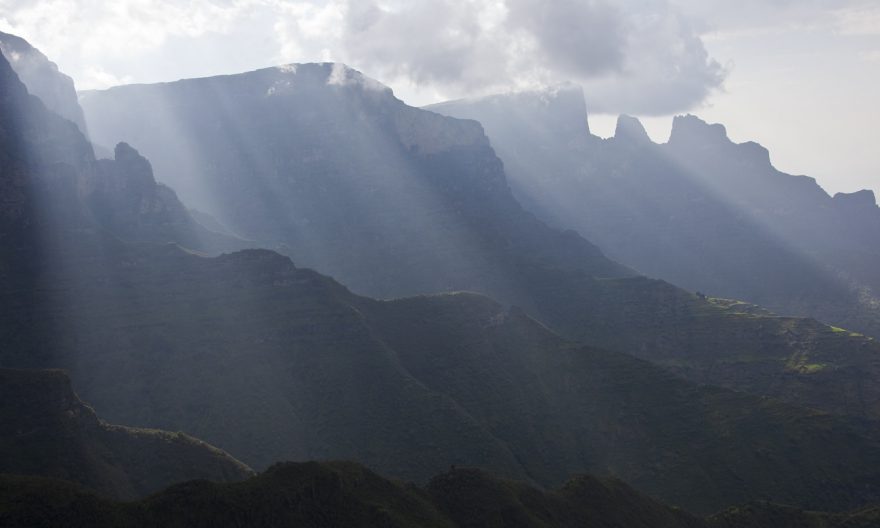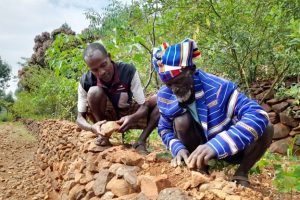
The Ethiopian government has given due priority to the tourism sector development and harnessing the sector potentials. During a new government formation last year, Prime Minister Abiy Ahmed (PhD) highlighted the tourism sector potential of the country. The premiere indicated that the sector needs a visionary mind to develop and make the sector beneficial.
As to him, the country is endowed with lots of natural resources that include the amazing landscape. Investing in the sector will engage a vast number of citizens that need jobs. Beyond its economic benefit, the sector plays a pivotal role in promoting Ethiopia to the rest of the world.
Different local and international tourists indicate that Ethiopia topography is one of the preferable destinations for hiking. Ethiopia’s premier trekking and walking destination, the 412 square kilometers Simien Mountains National Park was inscribed as a Natural World Heritage Site in 1979, whereupon UNESCO lauded it as “one of the world’s most spectacular landscapes, with jagged mountain peaks deep valleys and sharp precipices dropping some 1,500m”. In addition to the splendid scenery and hiking opportunities, the Afromontane meadows and moorlands of the upper Simiens also form one of Ethiopia’s most important biodiversity hotspots, populated by an alluring wealth of endemic plants and animals including Walia ibex, gelada baboon and Ethiopian wolf.
According to Tourism Ethiopia, the bedrock of the Simien Mountains comprises a vast and ancient basaltic dome molded into a series of jagged pinnacles and buttresses by glacial activity and precipitation. More than a dozen of its peaks top the 4,000m mark, including the 4,533m Ras Dejen, which is Ethiopia’s tallest mountain. The Afromontane vegetation of the Simien Mountains includes more than 1,200 plant species, of which three are endemic to the national park. Above 3,700m, the dominant vegetation type is open grassland punctuated by spectacular giant lobelias that stand up to 10m high. Giant heather trees and other ericaceous plants are the main vegetation type between the 3,000m and 3,700m contour.
More importantly, the Simien Mountain protects an alluring selection of endemic wildlife. It is the last remaining stronghold of the impressively horned Walia ibex, the only goat indigenous to sub-Saharan Africa. Large troops of gelada baboons are rendered unmistakable by the male’s flowing lion-like mane and heart-shaped red chest patch. A population of around 50 Ethiopian wolves is the world’s second largest after Bale Mountains National Park. Other large mammals include Anubis baboon, Hamadryas baboon, grivet monkey, Menelik’s bushbuck, klipspringer, common jackal, spotted hyena and leopard.
In addition, Simien Mountains National Park is one of northern Ethiopia’s key birding sites, with a checklist of 180 species that includes five Ethiopian endemics and 12 near-endemics. However, many would say the true avian star of the Simien is the magnificent lammergeyer, a cliff-loving vulture with a 2-metre wingspan and the only bird in the world with a specialized diet of bone marrow.
For tourists the best way to explore the Simien Mountains is on foot or mule back Several overnight options are available. The 3-day trail connecting Sankaber, Gich, Imet Gogo and Ayna Meda is recommended to those whose main interest is endemic wildlife. For peak-baggers, the ascent to the summit of Ras Dejen could be undertaken as a 3-day hike from Chennek. For those with limited time, it is possible to drive east from Debark to Chennek along an all-weather road, and to exit the car for short walks.
Accordingly, the main attraction of the Simien Moumains National Park is its biosphere, the steep cliffs and the cool climate at the altitude of the Erica tree line (3600 to 4000 m ash) have created conditions that are appropriate for the survival of an ibex species endemic to the Simien Mountains. Despite the severe restriction of their habitat over the last centuries, several hundred animals have survived up to the present. Apart from the Walya ibex, many other animal species are found in the Park, for example the endemic Simien fox or Ethiopian wolf, several birds of prey, the endemic Gelada baboon, the Klipspringer, and the bush buck are found in a greater number.
Experts recommended that Ethiopia, the Land of Origins, is truly a country of great and untapped tourism potential yet to be developed. Giving more attention to domestic tourism and incorporating domestic tour packages by tour operators and hotels help to promote domestic tourism. Lack of organized tour plans, marketing, and incentives for domestic tourism limits the country not to gain more from the sector. Religious journeys, cultural holiday celebrations, recreation, and family visiting are leading in the country’s domestic tourism. Strengthening ‘Hagerhn Ewok’ (Know Your Country) Schools’ tour clubs and promoting awareness about the value of domestic tourism cultivates the sector competitiveness and supports the national economy.
In sum, apart from conserving the natural tourists destinations the government has taken new initiatives of the development of Gorgora, Wonchi and Koisha tourist destinations launched at ‘Gebeta Le Hager’ or ‘Dine for the Country’ project will continue as planned. In order to develop the resources available in the tourism sector, existing destinations need to be strengthened by enhancing heritage conservation work and improving the service delivery of the sector.
BY TEWODROS KASSA
THE ETHIOPIAN HERALD FRIDAY 29 APRIL 2022





